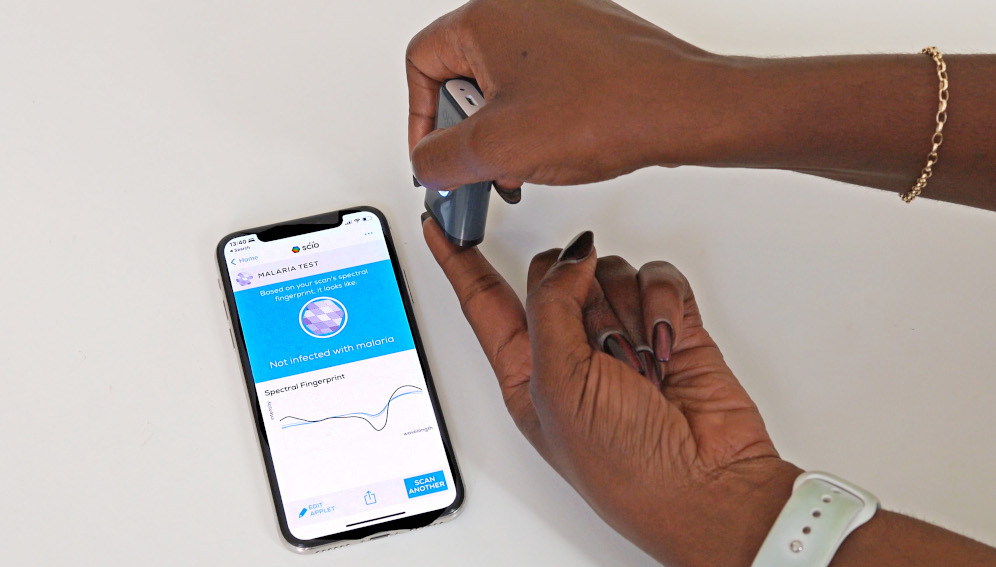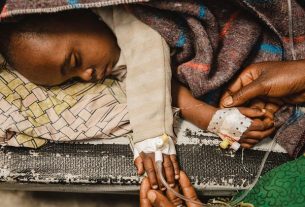[SYDNEY] A quick, affordable, non-invasive detection tool could help accelerate progress in meeting the UN Sustainable Development Goals’ target to eliminate malaria, say researchers who developed it.
The WHO’s global technical strategy for malaria 2016–2030 aims to reduce malaria incidence and mortality rates by at least 75 per cent by 2025 and at least 90 per cent by 2030 against a 2015 baseline.
“This infrared signature is a reflection of what is present in the bloodstream of a person. [As] malaria infects red blood cells causing both structural and chemical changes — these changes are what is observed in the reflected signature.”
Maggy Lord, University of Queensland
But by 2021, malaria case incidence and deaths are both off track by 48 per cent. Based on the current trajectories, the world will be off track in reaching the malaria targets by 88 per cent, according to Abdisalan Noor, head of the Strategic Information for Response Unit, WHO Global Malaria Programme.
To help get back on track, researchers from Australia and Brazil have come up with a handheld, smartphone-operated, near-infrared spectrometer that shines infrared light for about five seconds on a person’s ears, arms, or fingers to detect changes in the blood caused by malaria.
They hope it could be used for the WHO-proposed universal screening that is a part of current malaria elimination strategies.
“If we can detect a large proportion of asymptomatic patients, they can receive treatment and prevent transmission to others, particularly children under the age of five years,” says Maggy Lord, lead author of the research, published 7 December in PNAS Nexus.
Video credit: University of Queensland.
“By shining light on a body part, an infrared signature is detected through a phone or a computer,” Lord, a researcher at the University of Queensland’s School of Biological Sciences, tells SciDev.Net. “This infrared signature is a reflection of what is present in the bloodstream of a person. [As] malaria infects red blood cells causing both structural and chemical changes — these changes are what is observed in the reflected signature.”
Computer algorithms are then used to develop predictive algorithms that can differentiate malaria-infected people from the uninfected, giving results in real-time, she explains.
“These off-the-shelf spectrometers cost roughly US$2,500, but do not require sample processing procedures nor reagents to operate and therefore could easily be scaled up to scan an estimated 1,000 people per day per device,” adds Lord.
The tool is the outcome of a research collaboration between Australia’s University of Queensland and Brazil’s Instituto Oswaldo Cruz.
The technology could also help tackle other vector-borne diseases, such as Zika and dengue in asymptomatic people, who act as a reservoir for transmission by mosquitoes, says Lord.
“This was just proof of concept and with further funding, we will expand the study to other malaria endemic areas before we can recommend these devices for clinical use. We are extending our work with partners in Kenya and Tanzania,” she adds.
The WHO’s 2022 World Malaria Report stresses the need for investment in new tools, along with strengthening health systems and increasing funding. There were an estimated 619,000 deaths and 247 million cases of malaria globally in 2021. While African countries accounted for about 95 per cent of cases and 96 per cent of deaths, nine malaria-endemic countries in the South-East Asia region contributed to about two per cent of the malaria burden last year.
In 2021, more than three quarters of malaria cases in WHO’s South-East Asia region were concentrated in India with case increases also seen in Bangladesh, the Democratic People’s Republic of Korea and Indonesia. In WHO’s Western Pacific region, Papua New Guinea accounted for 87 per cent of all cases in 2021, followed by the Solomon Islands, Cambodia and the Philippines.
Malaria Consortium’s Senior Research Adviser Jane Achan says, “Sensitive diagnostics will play a key role in surveillance and early detection of outbreaks as malaria control efforts intensify and countries progress to elimination phases. As such, new and innovative diagnostic tools are urgently needed, especially in light of emerging threats to the effectiveness of some of the tools currently available.”
“Non-invasive malaria diagnostic tools are attractive as a rapid, reagent-free and affordable approach, but their sensitivity and specificity need to be confirmed in endemic settings and evidence gathered on how they can be integrated into healthcare practice universally,” Achan, who is not connected with the study, tells SciDev.Net.
This piece was produced by SciDev.Net’s Asia & Pacific desk.




